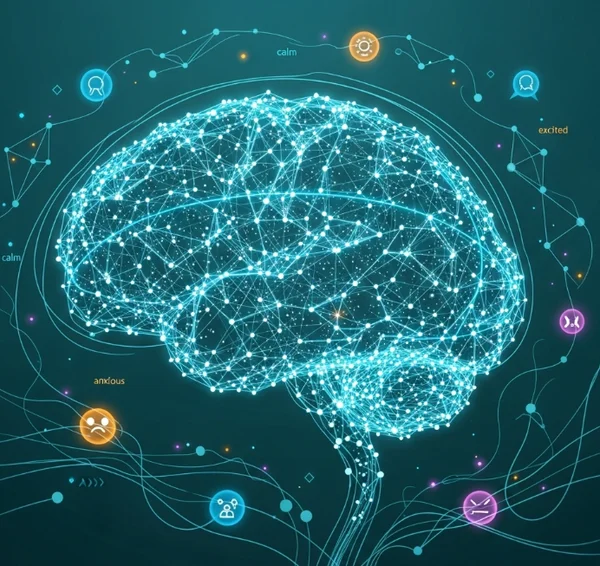Interpreting Your Trauma Test Results with AI Analysis
So, you've taken a trauma test on TraumaTest.org, perhaps even explored the new AI trauma analysis feature, and now you have your results. What does my trauma score mean? It's a common and important question. Understanding your trauma test results is more than just looking at a number; it's about gaining insights for self-reflection. This guide will help you navigate and understand both your basic score and the deeper personalized report meaning from our AI, always remembering these are tools for awareness, not diagnosis. For a deeper understanding, explore how to interpret your results here.

Understanding Your Basic Trauma Test Score: What the Numbers Indicate
After completing the initial trauma test, you receive a score. How is this initial score calculated and what does it generally suggest?
How the Initial Score is Calculated (A General Overview)
Our basic trauma test score is typically derived from the number and type of affirmative responses to questions about various trauma symptoms and experiences. While the specific algorithm is proprietary, the principle is to quantify the extent to which self-reported experiences align with common trauma indicators.
General Interpretations: Low, Moderate, and High Score Ranges
Often, screening tools categorize scores into ranges (e.g., low, moderate, high) to provide a general sense of potential concern.
- Low scores might suggest fewer reported trauma-related symptoms.
- Moderate scores could indicate some presence of symptoms that may warrant further attention.
- High scores often suggest a significant number of reported symptoms, making self-reflection and potentially professional consultation more important. It's key to remember that these are general indicators for an online trauma assessment.
Your Score is a Snapshot, Not a Definitive Label
Your trauma score meaning is best understood as a snapshot in time, based on your current recall and self-perception. It's not a definitive label of who you are, nor is it a clinical diagnosis. Life experiences and self-awareness can change, and so might your responses over time.
Going Deeper: Interpreting Your AI Personalized Trauma Report
The AI trauma analysis feature on TraumaTest.org aims to provide a more nuanced personalized report meaning beyond the basic score. How do I understand the AI generated report?
Recap: What the AI Analysis Adds Beyond the Score
Unlike a simple score, the AI trauma analysis considers the patterns and interconnections within all your answers (including optional contextual information, if provided). It aims to offer qualitative insights and reflections tailored to your unique response profile.

Assessment Overview: Context for Your Personalized Insights
This section of your AI report typically re-states your basic score but frames it within the context that a more detailed, personalized analysis follows. It reminds you that the subsequent insights are algorithmically generated based on your specific data.
Making Sense of "Your Personalized Analysis" Text
This is often the core narrative. Look for themes and reflections on how your experiences and reported symptoms might interrelate. The language is designed to be reflective rather than definitive. Does it resonate with your lived experience?
Reflecting on Identified Cognitive & Emotional Patterns
The AI may highlight potential patterns in your thinking or emotional responses commonly associated with trauma symptoms. For example, it might touch upon difficulties with emotional regulation, negative self-talk, or memory issues. Consider these as points for further personal reflection.
Understanding AI Insights on Your Coping Mechanisms
If you provided information on your coping mechanisms, the AI might offer general reflections on these strategies. It won't prescribe or judge, but might note common associations or potential areas for you to consider regarding their effectiveness in your life.
Recognizing Your Strengths and Challenges as Highlighted by AI
A balanced understanding trauma assessment also considers resilience. Your AI report may highlight potential strengths (e.g., strong social support if indicated, or use of some positive coping skills) alongside potential challenges suggested by your responses.
Considering the Daily Life Impact Assessment
This section aims to connect your reported symptoms and experiences to potential impacts on daily functioning – such as in relationships, work, or general well-being. This helps in contextualizing the trauma test results.
Using the Personalized Learning Plan Suggestions Wisely
Some AI reports might offer general suggestions for areas of learning or types of self-help tools (like mindfulness or journaling). View these as broad ideas for exploration, not specific directives. The value lies in what you find helpful.
Key Considerations When Reviewing Your Trauma Test Results
Interpreting trauma test scores and AI reports requires a thoughtful and balanced approach. Here are some crucial points:
This is a Tool for Self-Reflection, Not Self-Diagnosis
This is the most important takeaway. Our trauma test and AI trauma analysis are self-reflection tools. They are not designed to, and cannot, provide a clinical diagnosis of PTSD, CPTSD, or any other mental health condition.
Trauma is Complex: Results are a Starting Point for Exploration
Human experiences, especially those related to trauma, are incredibly complex. Your trauma test results offer a starting point for deeper self-exploration, not a final answer.
Avoid Comparing Your Results with Others
Everyone's journey and response to trauma are unique. Comparing your score or report with others' is unhelpful and can be misleading. Focus on what the insights mean for you.
Focus on Patterns and Insights, Not Just the "Score"
While the score provides a reference, the true value, especially with the AI trauma analysis, lies in the patterns, themes, and personalized reflections. These offer richer material for self-understanding.
What to Do After Interpreting Your Trauma Test and AI Analysis
Once you've reviewed your online trauma test results, what are the next steps?

Journaling and Self-Reflection on Your Insights
Take time to journal about the report. Which parts resonated? Which surprised you? What feelings came up? This can deepen the personalized report meaning for you.
Sharing with a Trusted Friend, Family Member, or Professional
If you feel comfortable, discussing your insights with a trusted individual can be helpful. However, for deeper processing and guidance, a mental health professional is the best resource.
When Your Results Reinforce the Need for Professional Support
If your trauma test results are in a higher range, or if the AI trauma analysis highlights significant distress or persistent trauma symptoms that deeply resonate with your experience, consider it a strong indicator to seek professional support. A therapist can help you make sense of these experiences in a safe and constructive way. You can always revisit our assessments on TraumaTest.org to gather your thoughts before such a consultation.
Your Results, Your Journey: Using Insights for Growth
Ultimately, interpreting trauma test results, including the nuanced feedback from an AI trauma analysis, is about empowering your personal journey. The goal of TraumaTest.org is to provide accessible tools that foster self-awareness and encourage proactive steps towards well-being. Use these insights not as labels, but as fuel for growth and, if needed, a bridge to professional support.
How do you approach interpreting results from self-assessment tools? Share your general strategies or thoughts in the comments below!

Interpreting Trauma Test & AI Report: Your Questions
-
What does a "high score" on the basic trauma test really mean?
A high score on a basic trauma test generally suggests that you have reported a significant number of experiences or symptoms commonly associated with trauma. It indicates that further self-reflection and potentially professional consultation would be beneficial. It is not a diagnosis but a flag for attention.
-
How specific is the AI trauma analysis to my personal situation?
The AI trauma analysis is designed to be more specific than a basic score because it analyzes the patterns across all your answers and any optional contextual information you provide. While it's still an algorithmic interpretation and not human clinical judgment, its aim is to provide reflections that are more tailored to your unique response profile, making the personalized report meaning more relevant.
-
Are the "coping mechanisms" suggested by the AI report actual therapy advice?
No. Any mention of coping mechanisms or learning suggestions in the AI report are general reflections or broad ideas for exploration based on common psychological principles. They are not therapy advice, nor are they a substitute for personalized strategies developed with a mental health professional.
-
If my AI report highlights "strengths," does that mean I don't have significant trauma?
Not necessarily. Highlighting potential strengths is part of a balanced understanding trauma assessment. People can have significant resilience and strengths alongside experiences of trauma and its related trauma symptoms. The AI aims to reflect both aspects if your responses suggest them.
-
What's the most important thing to remember when looking at my trauma test results?
The most important thing is that your trauma test results, including any AI trauma analysis, are tools for self-awareness and a starting point for reflection, not a definitive diagnosis or label. Use them to understand yourself better and to guide decisions about seeking further support if needed. You can always explore the tools further on TraumaTest.org.